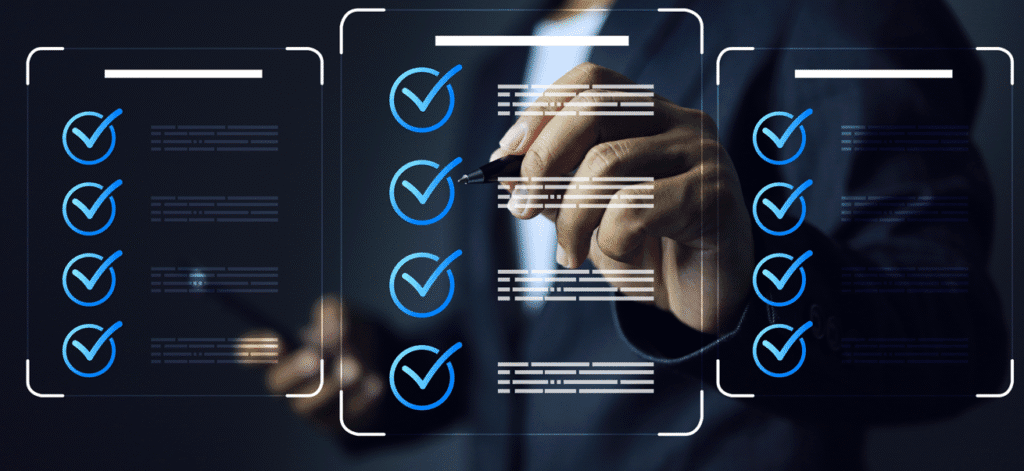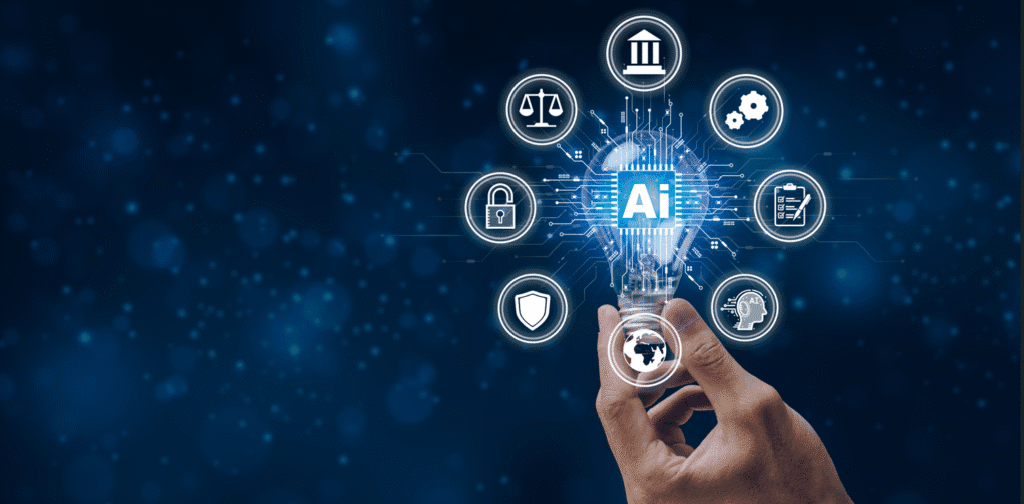Artificial intelligence is reshaping how organizations operate, make decisions, and manage data. But as AI becomes embedded in nearly every business function, it’s also redefining the responsibilities of one critical role — the Chief Information Security Officer (CISO).
In 2025, security leaders are being called upon to go beyond traditional network defence. They’re now expected to shape, oversee, and enforce the rules that govern responsible AI use. This shift isn’t a passing trend — it’s a structural evolution in how organizations approach cybersecurity, compliance, and trust.
From Defenders to Stewards of Responsible AI
According to Optiv’s Strategic Role of CISOs in an AI-Driven Era (July 2025), the modern CISO is no longer seen as a gatekeeper but as a strategist who enables innovation securely.
“As organizations increasingly adopt AI technologies, establishing robust AI governance frameworks is critical. CISOs are tasked with defining clear accountability, responsibilities and risk management strategies to ensure the secure deployment of AI systems.”
AI introduces new layers of operational and ethical risk and that someone must take ownership of managing those risks before they undermine public trust.
That ownership naturally falls to the CISO. They already understand how to assess and mitigate risk, protect data, and implement controls that balance speed with safety. The next step is to extend these same principles to AI systems: classifying AI-related data, setting usage boundaries, reviewing model behaviour, and ensuring outcomes remain explainable and fair.
In other words, CISOs are evolving from defenders of infrastructure to stewards of responsible AI.
Why AI Governance Belongs Under the CISO’s Umbrella
Fortinet’s AI Governance: Building a Responsible Foundation for Innovation (October 2025) highlights a simple truth: AI security is inseparable from cybersecurity. AI models don’t exist in a vacuum, they rely on the same data pipelines, access controls, and compliance frameworks that CISOs already manage.
“For CISOs, AI governance is a natural extension of existing responsibilities in risk management and compliance. As AI systems increasingly process sensitive data and influence core business operations, security leaders must ensure that governance frameworks are in place to manage these risks.”
CISOs are already accountable for ensuring systems comply with frameworks such as SOC 2, ISO 27001, and GDPR. Expanding that responsibility to include oversight of AI models isn’t a stretch; it’s a natural progression. By embedding AI governance into existing cybersecurity programs, organizations avoid duplication and maintain consistent control standards.
This approach ensures that AI initiatives are evaluated through the same lens as any other technology project: what data it uses, who has access, how results are validated, and what happens if something goes wrong.
The Governance Gap CISOs Must Close
The need for CISO leadership in AI governance isn’t theoretical — it’s urgent.
While nearly every enterprise is experimenting with AI, only a fraction have defined accountability for how those systems are secured and monitored.
Without effective oversight, AI can introduce vulnerabilities faster than traditional security teams can detect them. The opportunity lies in the CISO’s ability to lead cross-functional collaboration — bringing together compliance officers, data scientists, legal teams, and business leaders to design a unified governance model.
Organizations that empower CISOs to own this coordination are better positioned to align AI innovation with compliance obligations and public trust.
Building a Governance Framework That Works
For many security leaders, the starting point is adopting familiar frameworks. The NIST Framework (AI RMF) and ISO/IEC 42001 provide structure for identifying, measuring, and mitigating AI-related risks. CISOs can integrate these AI protocols directly into their existing cybersecurity and compliance programs.
Key actions to prioritize in 2025 include:
- Inventorying AI systems across the organization — just as they do for software and hardware assets.
- Extending policies to include AI guardrails for responsible AI use, model training data, prompts, and outputs.
- Defining incident-response procedures specific to AI failures or misuse.
- Reviewing vendor AI solutions for compliance with security and privacy obligations.
- Establishing human oversight checkpoints for AI tools, where automated decisions have regulatory or ethical implications.
By operationalizing these controls under the cybersecurity umbrella, organizations can treat AI governance as a continuation of their risk-management discipline rather than a standalone compliance exercise.
The Human Side of the CISO’s Evolving Mandate
Perhaps the biggest change isn’t technical — it’s cultural. As AI adoption accelerates, CISOs must help organizations build awareness and accountability at every level.
This requires a shift from “security awareness” to “security and AI awareness.”
CISOs who invest in AI training, policy communication, and cross-department collaboration will not only reduce risk but as Optiv states will foster a culture of “security-first” mindset and innovation.
Looking Ahead
The expanded role of the CISO reflects where technology is heading — toward intelligent, automated systems that can both amplify and undermine business value. In this environment, the boundaries between cybersecurity, compliance, and AI governance are disappearing.
By embedding AI governance into cybersecurity and compliance programs, organizations strengthen their defences, protect their reputations, and build the trust that sustainable AI adoption demands.
The CISO isn’t just the guardian of digital assets anymore. They’re becoming the architect of ethical, secure, and compliant AI, as well.
Resources
Sekar, Pradeep. “Cybersecurity Leadership in 2025: The Strategic Role of CISOs in an AI-Driven Era.” Optiv, July 14, 2025, www.optiv.com/insights/discover/blog/cybersecurity-leadership-2025-strategic-role-cisos-ai-driven-era.
Brenner, Rafi and Windsor, Carl. “AI Governance: Building a Responsible Foundation for Innovation | CISO Collective.” Fortinet Blog, 13 Oct. 2025, www.fortinet.com/blog/ciso-collective/ai-governance-building-a-responsible-foundation-for-innovation.
Need more info?
Contact Cyntry to assess your AI governance readiness and learn how to integrate responsible AI practices into your existing cybersecurity program.
Book a no-cost 30-minute compliance and cybersecurity strategy session at Cyntry.com



